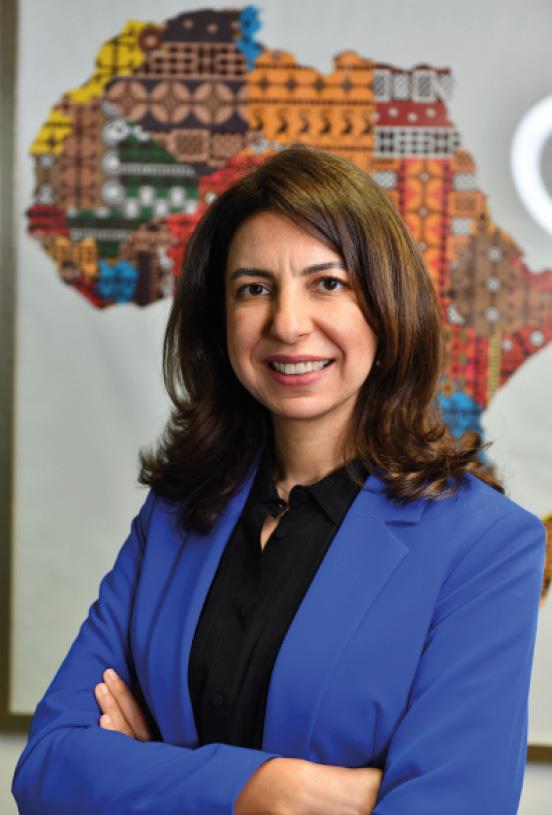06 April 2022

The Covid-19 pandemic that began in 2020 was a destructive force that irrevocably changed the way we live and work. However, it was also a catalyst for something we didn’t expect for a few more years, writes Nora Wahby vice president and head of Ericsson west Africa & Morocco
It was an almost surreal experience visiting the Mobile World Congress in person for the first time since 2019. That’s because things have developed in a way that we could not anticipate. When we look down the line two-years-ago, we did not expect a pandemic to occur in the way it did and the incredible impact it has had on our day-to-day.
So, technically we have seen a substantial growth with regards to mobile broadband demand throughout the last two years. The reliance on connectivity was a business continuity fall back plan for many businesses. A high demand was put on the mobile network quality and capacity to cater for remote working.
We’ve seen a lot of governments taking decisions of opting into online education, this has put additional speed and bandwidth requirement on the network.
The decision of going online has accelerated the digital transformation that many industries have been struggling to take for few years before. We can comfortably say that the pandemic has been one of the biggest catalysts for digital transformation in this era.
The pandemic has also put an additional requirement for a quicker development of the mobile broadband networks because everything that used to happen in certain defined geographical locations has transited into the home. As a result, there is an additional requirement in terms of readiness and capacity on the CSP networks, obviously, so the uptake of broadband has been unprecedented.
While the pandemic has caused some major problems for countries all over the world, I can say it has been a catalyst. The transformation, as in where we are today, would have taken a lot longer had the pandemic not happened. So, whether it’s good or bad, the transformation is one we expected over a much longer period – instead, it has accelerated.
I cover West Africa and Morocco, where fixed networks are underserved, mobile broadband has been the substitute big time. For example, we’ve seen an increased offering of fixed wireless access (FWA). People want to be connected at home and there’s a lot of innovation around FWA to substitute the absence of fibre. That is providing a similar – sometimes better quality – and at a lower cost and a quicker time to market.
The growth in west Africa has been very important – by that I mean sub-Saharan Africa – where CSPs had the ability to quickly deploy, they have seen enormous growth and a good return.
So, do I think Africa will achieve universal internet access by 2030?
Judging by what we’ve experienced over the last two years, I don’t see why not. There is a will, but let’s not forget the pandemic has posed major economic challenges, which are translated into the operator’s income.
It’s also about how the African continent is going to survive after the pandemic, how quickly it will return to growth and how the entire global community is going to support Africa with vaccines. Africa also needs to recover from this as quickly as the rest of the world is and so progress in this space is down to a combination of a lot of different things.
The obvious diversity in Africa – different terrain, politics, economics, and demographics – also combine to make mobile broadband roll-out faster in some countries and slower in others. It also comes down to policy; how the regulators are technically supporting the CSPs to have access to the right frequencies at the right cost and speed up the enabling of this broadband.
In a few cases where we have seen regulators adopting a policy that underlines the fact connectivity is an economic growth engine and it’s not only a way to sell spectrum, but Mobile broadband has also been looked at as an engine to accelerate economic growth, to create more business opportunities and to use innovation to resolve local challenges.
A concrete example is Mobile Financial Services where mobile money is helping to bank the unbanked, increasing the reach of banking services beyond the normal reach of the traditional banking system but also create opportunities to bridge the digital divide and contribute to the welfare of the people.
When you have a clear strategy and market commitment, which is aligned with the country policy, the recipe is way more successful.






